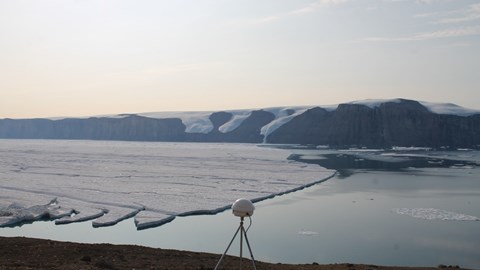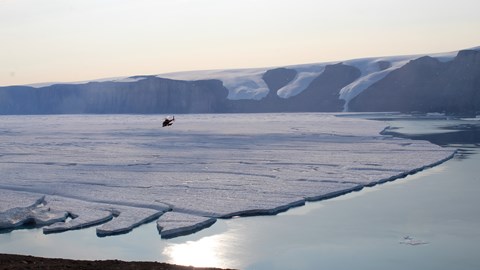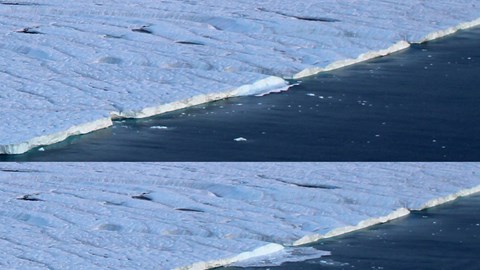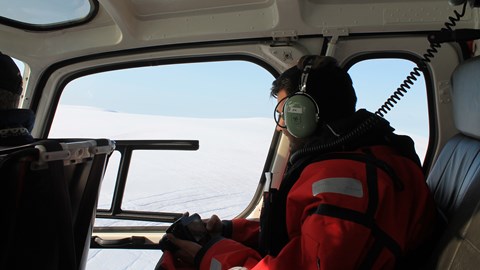Investigating iceberg release from Greenland’s glaciers
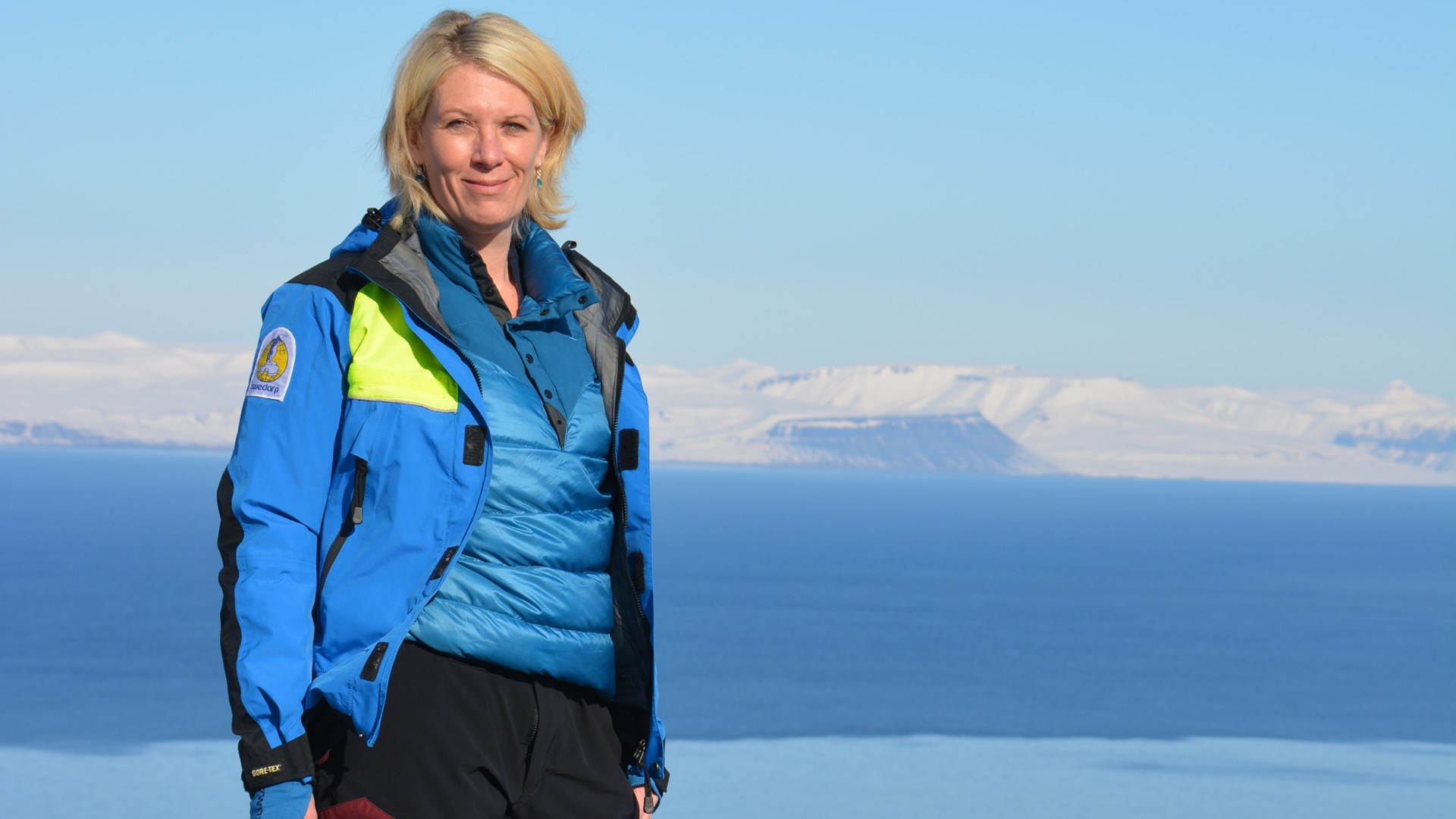
Glaciers that terminate where there is water, such as fjords or open coastal waters, lose mass through so-called frontal ablation, which is the common name for the processes of iceberg calving and melt below the water surface. During the recent expedition with the icebreaker Oden to the Ryder Glacier in northern Greenland, researchers investigated frontal ablation with the help of time-lapse photography and LoTUS buoys.
– The pace of frontal ablation results in uncertainty in future forecasts regarding sea level rise. However, direct observations of calving and submarine melt are challenging to carry out, and previous observations are rare. Our measurements and observations from Ryder Glacier and Petermann Glacier will be used in conjunction with numerical models of glacier dynamics that we develope in our working group. With an improved description of frontal ablation in numerical models, prognoses regarding future mass loss from glaciers will become less uncertain, says Nina Kirchner, glaciologist at Stockholm University.
Uses pictures and temperature measurements
Time-lapse photography, i.e., photography that captures a longer time period, and LoTUS buoys (Long Term Underwater Sensing), are two of the methods used during the Ryder Glacier expedition. The purpose is to understand which environmental factors that affect the pace of ice release from the glacier (calving) and to be able to classify different types of calving.
– The camera was placed ashore about a kilometre from the north side of the calving front of Ryder Glacier at an altitude of 371 meters above sea level, so that the entire glacier front was visible in the photographs. We took over 140,000 images that reveal calving events of various sizes. The next step is to analyse the images in connection with meteorological data recorded from icebreaker Oden, to try to determine which environmental factors affect the timing and intensity of calving. Thanks to the pictures taken every five seconds, calving style information can be obtained, something that cannot be done with satellite images. However, satellite images will be used to extend the study’s time frame, says Nina Kirchner.
To measure the temperature in the water near the glacial front, LoTUS buoys have been used at 225- and 415-meters depth, anchored two meters above the seabed. The buoys are used for long-term measurements of water temperatures until August 2020, when they will start transmitting data via a satellite connection.
– The buoys allow us to investigate to what extent relatively warm Atlantic water penetrates Ryder Fjord and comes close to the front of Ryder Glacier. The information is important as warm water reaching the floating glacier tongue can lead to melt below the waterline.
Unique opportunities with ship expeditions
Participating in the expedition to northern Greenland were PhD students Felicity Holmes and Abhay Prakash at Stockholm University.
– To be part of an expedition to such a remote area and being able to participate in fieldwork together with polar scientists from other disciplines is really valuable. It allows me to learn more about the many aspects of polar science and gain a more nuanced understanding of the Arctic environment, says Felicity Holmes.
– It is important to learn the whole process, from data samples to analysis, and it is valuable to learn skills linked to fieldwork planning in the harsh polar environment. Oden’s crew was fantastic and worked around the clock to make sure we scientists got all the help we needed, for that I am incredibly grateful, says Abhay Prakash.
Nina Kirchner emphasizes that ship expeditions, such as the one with Oden to the Ryder Glacier, provide unique opportunities to collect data on-site in the Arctic.
– The polar oceans play a crucial role in the climate system, they are affected by the current global warming and the changes in the Arctic are happening faster than we previously thought. However, there is still a great lack of measurement data from remote areas that are difficult to reach.
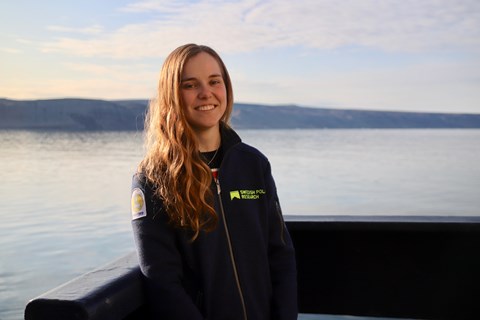
About Nina Kirchner
“Although I was a land-based participant on this expedition, I have previous experiences with Oden and other research vessels. I think many agree with me that icebreaker Oden and its fantastic crew, including the Swedish Polar Research Secretariat, contribute to a comfortable and social environment, as well as provide the best conditions for us to conduct research.” - Nina Kirchner about the research icebreaker Oden

